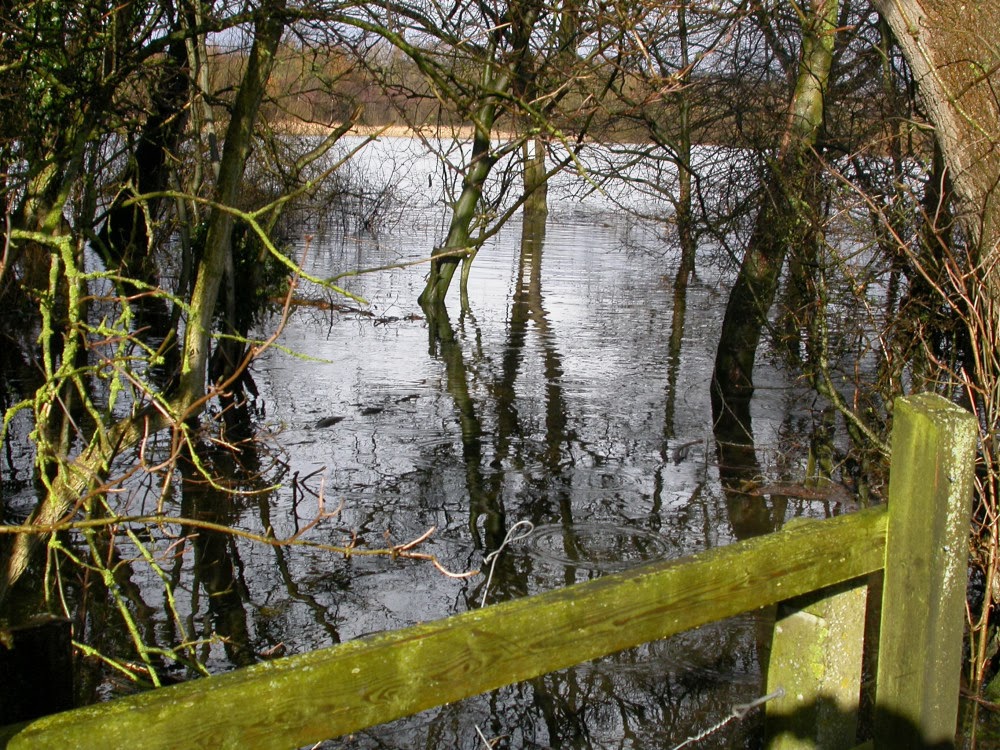25th February - the weather and last week's half-term have taken their toll on my birding recently. 2 male Pintail were seen last Wednesday whilst I was at work and a quick visit on Thursday failed to find them, so that's Pintail and Goldeneye that I've missed now.
Water levels are still very high and the spit is still submerged, although today there were signs that it is beginning to reappear at the base. It really needs to come back soon in time for spring passage, as that is one of the main draws for birds and it seems really quiet when it is flooded.
I had a free hour on Sunday morning, so had a look around the western side. The path is no longer submerged and it is now relatively easy, though muddy with puddles, to reach the meadows. I was surprised to see that a tree had fallen across the gate to the meadow. It had obviously been on some the railway, as it had been sawn away from the track side. I later found that there are quite a few trees down on the southern bank, as Alan S had been round to survey the damage and taken a few photos. I'm not sure when these were blown over, but some time in the recent winds - it really is a bit of a mess at the moment and potentially dangerous. Lafarge or the council will hopefully soon be out with their chainsaws to tidy up.
 |
| 11th Feb about the highest water - wot no spit! |
 |
| 11th Feb - water almost up to the bench |
 |
| 11th Feb |
 |
| 23rd Feb - fallen trees |
Today, I was sheltering from the hail and rain, wondering why the forecast I had seen was wrong and wishing I was indoors in the warm, when I noticed a small flock of 7 ducks flying over. Through bins, it was obvious that the final bird was an elongated and long tailed
male Pintail - result! It was flying with a
female Pintail and 5 Wigeon. They quickly flew through to the west. A few minutes later, the flock returned and eventually landed, so I was able to grab a distant record before the pair of Pintail disappeared behind the island - a welcome grip back!
Earlier, as I had arrived, 3 Shelduck had flown off south and in the north west corner, when the sun eventually emerged, a Chiffchaff was in song. 4 Snipe were visible in the spit reed bed.
The flood meadows had noticeably receded, with plenty of grass and mud visible. This had attracted quite a few Shoveler from the lake and loads of Black-headed Gulls, but nothing else that I could see. Hopefully, as the water continues to fall, it might attract some nice waders, though by then the dog walkers will be back scaring everything away!
I decided to walk the footpath to the Roach pit, but saw very little of note apart from a male Blackcap in subsong just by the Queen's Head pub.
























